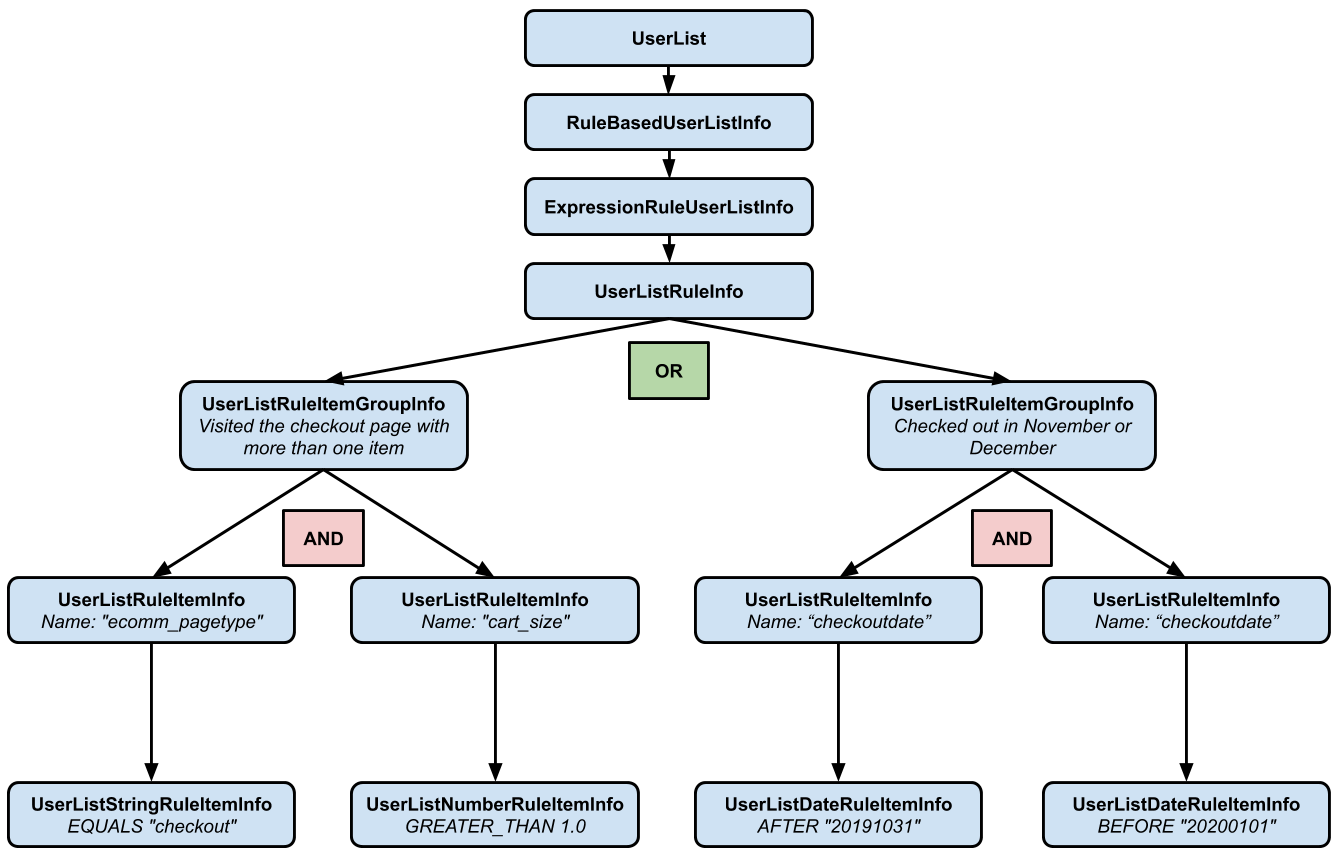假设您有一个网站,您已在该网站中配置了多个自定义再营销代码参数,以捕获用户的以下属性:
event- 您网站上的网页类别,例如结账、购物车等。cartsize- 用户购物车中的商品数量。checkoutdate- 用户退房的日期。只有在用户实际完成购买时,您才需要设置此参数。
您希望对已经将多个商品放入购物车并开始结账过程的用户进行更多的展示。您还希望找出十一月和十二月间进行了购买的用户,原因是您计划这几个月在网站上进行大促销。
您可以使用以下任一规则描述此组用户:
- 访问结账页面并且在他们的购物车中有多个商品的用户
- 在十一月或十二月结账的用户
如果用户属于类别 1 或 2 中的任意一个,您希望将特定广告组或广告系列的出价提高 25%。
对象
不妨看看基于规则的用户名单的结构。在 Google Ads API 中,基于规则的名单表示为 rule_based_user_list。
下图展示了完成此用例后,rule_based_user_list 的外观。


